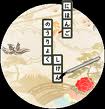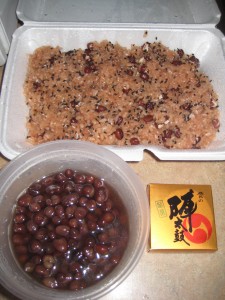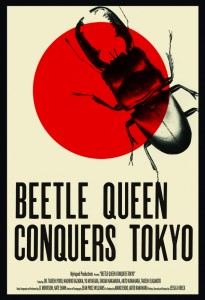WIT Life #98: 鳩山おろし
***********************************************************************************
WITLife is a periodic series written by professional Writer/Interpreter/Translator Stacy Smith (Kumamoto-ken CIR, 2000-03). She starts her day by watching Fujisankei’s newscast in Japanese, and here she shares some of the interesting tidbits and trends together with her own observations.
This morning’s news was buzzing with the announcement that Prime Minister Yukio Hatoyama will be stepping down from his position. This makes him the fourth PM in four years to quit, a statistic that will likely lead to some self-reflection in Japan. The 2 main reasons cited for his resignation were 1) 普天間問題 (Futenma mondai or the fate of the Futenma Marine Corps Air base on Okinawa) and 2) 政府と金 (seifu to kane or government and money, the investigations being carried out regarding Hatoyama’s political financing).
As for the former, Hatoyama directly apologized to Okinawans for his waffling on the matter and the loss of faith he had caused as a result. When on the street interviews were conducted with Okinawa residents, the response was largely one of disappointment and regret that Hatoyama was cutting and running. In terms of the latter, Hatoyama pledged to “return to a DPJ that separates government and money and to deal with the issue properly.”
The title of this post is 鳩山おろし (Hatoyama oroshi or “Down with Hatoyama”), referring to Read More
J-DOC: Japanese Proficiency Exam – What’s Changed, and How to Handle It
J-DOC, C-DOC, and K-DOC are recurring features written by Friend Of JET, Jon Hills, who maintains the blog for Hills Learning (www.hillslearning.com). Hills Learning is a NY-based  language learning services company offering customized and personal Japanese, Chinese, and Korean language learning options.
language learning services company offering customized and personal Japanese, Chinese, and Korean language learning options.
Japanese Class listing can be found at: Japanese Classes
Whether you’re a new student for the Japanese Proficiency Exam or have taken it in the past, the JLPT (Japanese Language Proficiency Test) in 2010 has changed. Consequently, how to study and handle the exam has also changed. This article will discuss the history of the exam and why changes were brought about, what’s new about the Japanese Proficiency Test for 2010, and how to best study to pass the JLPT.
The reason why the test was changed in 2010 was test takers and school administrators were complaining…
(Click JLPT 2010 for the rest of the article)
WIT Life #97: Anko obsessed
WITLife is a periodic series written by professional Writer/Interpreter/Translator Stacy Smith (Kumamoto-ken CIR, 2000-03). She starts her day by watching Fujisankei’s newscast in Japanese, and here she shares some of the interesting tidbits and trends together with her own observations.
For those of you who have been faithful readers of my blog, you probably have a sense of the sweet tooth that I have, especially regarding 和菓子(wagashi). This is something known well by those closest to me, as well as those looking for the fastest way into my heart :) My birthday was this past weekend, and my friends came through with flying colors in terms of satisfying my cravings for something sweet.
I celebrated my birthday with dinner at Koiso, the best Japanese restaurant in NY (and I’m not saying that just because I used to waitress there!). It is a truly authentic family-run joint where regulars dominate the clientele, and there are always multiple conversations taking place in Japanese. Taisho (the sushi chef), gets his supplies from the Freeport Fish Market, and he always lets customers know what fish are the freshest that day. Omakase (leaving it in the hands of the master) is definitely the way to go for the best sushi/sashimi!
Taisho’s wife Kyoko-san is the waitress and all-around life of Koiso, and the warmest woman you will ever want to meet. For my birthday, she had all of my favorites prepared. As you can see in the picture on the right resembling an anko trifecta, she made me a generous portion of Read More
Article about JetWit in CLAIR publication
There’s a nice article (in Japanese) about JetWit in the June 2010 issue of a CLAIR publication. I believe it was written by Hanzawa-san, who works in the CLAIR-NY office and served for one year as the JETAA USA Lisaison.
http://www.clair.or.jp/j/forum/forum/pdf_248/09_jet.pdf
Job: News reporter/research assistant for Daily Yomiuri (Los Angeles)
Via Caleb Rabinowitz of the Daily Yomiuri in Los Angeles:
News Reporter/Research Assistant
Location: Los Angeles, CA
Description:
The Los Angeles Bureau of the Yomiuri Shimbun, Japan’s largest national daily newspaper, seeks a reporter/research assistant. We cover social issues, sports events, national politics and any major breaking news in the Western and Midwestern states of the U.S. This job primarily involves gathering news, tracking newswires, assisting sportswriters, arranging interviews, conducting background research, creating scrapbooks of news clips and transcribing interviews. The office is often fast-paced, and the position will include exciting opportunities to travel to major news events, report on major sporting events, interview high-ranking state and national officials, and cover the entertainment industry. Applicants must be fluent in English and speak conversational or better Japanese. Those who speak Spanish will be preferred. Read More
Tom Baker (Chiba-ken, 1989-91) is a staff writer for The Daily Yomiuri. He usually writes for DYWeekend, the paper’s arts and leisure section. You can follow Tom’s blog at tokyotombaker.wordpress.com.
He recently interviewed Azby Brown, author of “Just Enough,” a book that describes how Japanese people 200 years ago (including the million-plus residents of Edo, which was the world’s largest city at the time) led environmentally sustainable lives. Here is an excerpt:
 Most of the details are of purely historical interest. It is unlikely, for instance, that you will ever need to stitch a thatched roof onto your house with a wooden sewing needle the size of a spear.
Most of the details are of purely historical interest. It is unlikely, for instance, that you will ever need to stitch a thatched roof onto your house with a wooden sewing needle the size of a spear.
However, the larger patterns that emerge from the details are of vital interest today. A farmer’s thatched roof could be made of rice straw, making good use of a by-product of food production. The same straw also was used to make rope, sandals, bags or mats. And when those items were worn out, they could be composted or mulched to help grow more rice, or they could be burned as fuel, incidentally creating ash that could be sold to the makers of ceramics, dyes and other products.
Brown calls this an example of “the zero-waste ideal.” But it wasn’t just farmers living close to the land who approached this ideal. Even urban Edo recycled almost everything and wasted almost nothing. “It was a self-policing system, because nearly every waste product had economic value for someone else,” Brown writes.
“Waste product” in this context means more than just rags, scraps and ash. Even the contents of the city’s toilets had economic value, with farmers paying for the privilege of hauling “night soil” away to make compost for their fields. Urine was collected separately, to extract ammonia and other useful chemicals.
Brown thinks these are practices to which the modern world would do well to return, especially in the present era of “alarming topsoil losses.” Unfortunately, the “yuck factor” keeps such resources from being utilized.
“I don’t know if you’ve ever seen…a composting toilet,” Brown said in the interview. “The compost that comes out is absolutely inoffensive. You really would think it was peat moss. You would not know what it was. There is almost no smell. [The problem is] the idea more than anything else.”
The use of night soil as farm fertilizer actually promoted public health in the Edo era, Brown writes. Because waste was collected and hauled away, it stayed out of the urban groundwater supply, helping to spare Edo from the deadly cholera epidemics that often swept large Western cities of the time.
Job: New AET needed in Shintoku (Hokkaido)
Via the Hokkaido JETs Yahoo listserv:
The Shintoku BOE is looking for an applicant to fill one of its two Assistant English Teacher (AET) positions. The town is looking for someone who can help the Japanese teachers with the Eigo Note. The successful applicant will also help teach at 2 junior high schools, design and teach a children’s conversation class and coordinate a yearly English/holiday party with the town’s other AET.
Application deadline: June 18th
Position begins: August 1st
WIT Life #96: ヒューストンの日本庭園
WITLife is a periodic series written by professional Writer/Interpreter/Translator Stacy Smith (Kumamoto-ken CIR, 2000-03). She starts her day by watching Fujisankei’s newscast in Japanese, and here she shares some of the interesting tidbits and trends together with her own observations.
The hot, humid weather down here in Houston certainly takes its toll on the body, but I was able to enjoy a morning run this weekend with one of the participants in my group (By the way, this fellow runner is also a former interpreter, and I would highly recommend her Japanese-only very entertaining blog). Our destination was Hermann Park located just off of the Rice University campus, and when we arrived and did some exploring we were able to find a Japanese garden! (日本庭園 or Nihon teien)
It was authentic in all respects, with manicured paths and a large tea house in the back. We took respite in the shade and Read More
J-DOC: JLPT 2010 – Lessons from the past and recommendations for the future!
J-DOC, C-DOC, and K-DOC are recurring features written by Friend Of JET, Jon Hills, who maintains the blog for Hills Learning (www.hillslearning.com). Hills Learning is a NY-based  language learning services company offering customized and personal Japanese, Chinese, and Korean language learning options.
language learning services company offering customized and personal Japanese, Chinese, and Korean language learning options.
Japanese Class listing can be found at: Japanese Classes or Japanese Classes Online
So it’s about that time of year where students are thinking about and preparing for the JLPT (The Japanese Proficiency Exam). Preparing for the exam this year will be different than last year, there have been a lot of changes to the exam. This article explores the Japanese proficiency exam with personal accounts of past failures and successes, and how this relates to the JLPT 2010.
For those readers who are not sure what I’m talking about by the “1-kyu” in the title of this article, there are 5 levels of the Japanese proficiency exam in 2010. 5-kyu is the beginner level, where as 1-kyu is the highest level.
Last year’s 1-kyu exam was quite difficult… (Click JLPT FAQ for the rest of the article)
Job: Translation/Writing/Editing with JAPANiCAN (Tokyo)
Thanks to JET alums and JAPANiCAN employees Bryan Reynolds and Brian Blanchard for sending this job listing to JetWit:
JTB GMT WEB販売部 JAPANiCAN営業チーム 求人情報
【Job Summary】
Job type Back office
Career level Mid-career
Contract type Fixed-term contract staff
Contract period End of June 2010 – 31 March 2011
Contract renewable a maximum of 4 times. After initial contract period, subsequent contracts will be for a period of 1 year.
*The decision to renew a contract will be based on job performance and results achieved under the previous contract, and will only occur with the consent of both parties.
Location Tokyo Shinagawa-ku
English level Native
Japanese level Business
Salary JPY 2,800,000 – 3,000,000/year
Requirements Native level English, currently residing in Japan
Able to begin work by end of June 2010
【About us】
JAPANiCAN.com is an online travel booking site for foreigners planning to travel around Japan. We provide a wide range of travel services and hospitality that has been built and integrated on top of the history of the JTB Group, one of Japan’s biggest travel companies. Our website is available in English, Korean and Chinese (traditional and simplified).
Our division has a culturally diverse staff and is a very friendly environment.
We are currently looking for native English speakers to join our Translation/Writing/Editing staff.
Read More
How to Present Yourself to a Publisher or Agent at a writers conference
**************
Laura Popp (Mie-ken, 2009-Present) is a current JET who writes fantasy and science fiction for children and young adults, and is an occasional playwright/film maker. Her short work includes a short story titled “In theShadow Realm” and a documentary she made in Malawi. To read about her amazing adventures all over Japan, go to her blog at laurajanepopp.blogspot.com. (And check out the Authors/Books section of the JetWit Library for a list of more writers in the JET-o-sphere.)
Tired of submitting queries to agents and editors and simply getting form rejection letters or worse, NO RESPONSE? Wondering if they`re even bothering to read your stuff? Frustrated by wanting to submit to publishing houses that only receive submissions from agents and “referred” writers? Consider meeting publishers and agents at a conference!
Recently I returned from a writers` conference in my home in Oklahoma and came back with some great success stories to tell. Even better than the wonderful presentations on writing, polishing and marketing were the opportunities for networking and industry contacts. One literary agent asked me for the first fifty pages of my middle grade novel Dargon, another agent requested a proposal for my young adult novel Treasure Traitor, and a publisher from Simon and Shuster asked to see the full manuscripts of BOTH. A travel publisher also requested a proposal for a non-fiction travel-essay book on Japan, and best of all, a Christian magazine publisher accepted one of my stories on the spot! Of course, most of these are just birds in the bush, if you will, but they are certainly a good start.
So how did you do it? you may be wondering. Well, let me tell you…
Do your homework
Many conferences post information about editors and agents who will be attending in advance. Research them and pick the ones that look like they may be interested in your completed fiction projects or non-fiction ideas. Note that most agents and publishers will ONLY consider finished fiction works and proposals for non-fiction articles and books.
Try to make an appointment
If you have the option to make an appointment, Read More
More JETAA Iron Chef — Now in Sydney
Here’s a message from the JETAA group in Sydney, Australia about their Sushi Iron Chef Event —
Event reminder – JETAA Sushi Iron Chef this Saturday!
Will you be the JETAA Iron Chef?
That’s right – the JET Alumni association is having a cook-off! Iron Chef style!!
All former JETS and folks interested in Japan are invited to attend!
Without giving too much away, sushi will be rolled, Japanese music will be played, and yes, there will be Iron-Chef like exaggerated commen…tary, hmmms…and ahhhs from judges and fun prizes to be had!
Please come along and bring your friends (RSVP plz)
Cost per head is the low low price of $15
The location is 64 Lawrence St Alexandria
(http://www.facebook.com/l/1026a;maps.google.com.au/maps?hl=en&q=64+Lawrence+St+Alexandria&um=1&ie=UTF-8&hq=&hnear=64+Lawrence+St,+Alexandria+NSW+2015&gl=au&ei=2j7rS7S0LorGrAewlazYCQ&sa=X&oi=geocode_result&ct=title&resnum=1&ved=0CBkQ8gEwAA)
Nearest train station is Erskineville. Street parking is available.
Looking forward to seeing you there!!
 By JQ Magazine’s Justin Tedaldi (CIR Kobe-shi, 2001-02) for Examiner.com. Visit his NY Japanese Culture page here to subscribe for free alerts on newly published stories.
By JQ Magazine’s Justin Tedaldi (CIR Kobe-shi, 2001-02) for Examiner.com. Visit his NY Japanese Culture page here to subscribe for free alerts on newly published stories.
As reported at Sakura Matsuri earlier this month, cosplay (costume play) is a growing trend among youthful patrons of public Japan-related gatherings. Last year, New York’s Japan Society hosted its first-ever cosplay party as part of its KRAZY! exhibition dedicated to anime, manga and video games. The event was a sold-out success, drawing nearly 500 fans who expressed their visual zeal (not to mention their tailoring abilities) for the more contemporary facets of Japanese culture. This year’s edition, fittingly titled Cosplay Party 2.0, kicks off Saturday, May 15, and is expected to top last year’s inaugural event.
The day promises a chance to meet and mingle with other cosplayers, nonstop musical entertainment by cosplay DJ Ruby Red, a photo booth, free admission to Japan Society’s current exhibition Graphic Heroes, Magic Monsters and a full-tilt costume competition, hosted by Uncle Yo and judged by World Cosplay Summit 2009 Team USA along with guest judge and Japan Society artist-in-residence Hiroki Otsuka. During the party, Japan Society’s theater will host New York’s big screen premiere of the anime film Evangelion 1.11: You Are (Not) Alone.
WITvid #7: “I Feel Good”
WITvid is a periodic series by Peter Weber (Saitama-ken 2004-07), the JET Program Coordinator in San Francisco.
Oh man, it’s been awhile since I’ve posted a WITvid, but I came across this one and had to share. It’s a throwback to the the early 90’s the the early years of the JET Program. Timothy Beagley aka julesvegas (Kitashigayasu 1991-’92) presents a complication Enkai video set the sounds of the Godfather of Soul. Looks like not much has changed as far as Enkais go.
Enjoy!
Interview with ‘Beetle Queen Conquers Tokyo’ Director Jessica Oreck
 The film Beetle Queen Conquers Tokyo explores the history and mystery of the development of Japan’s love affair with bugs, underscoring ancient philosophies that will shift Westerners’ perspectives. JQ Magazine’s Justin Tedaldi (CIR Kobe-shi, 2001-02) talked with producer/writer/director Jessica Oreck on the eve of the film’s New York premiere for Examiner.com. Visit his NY Japanese Culture page here to subscribe for free alerts on newly published stories.
The film Beetle Queen Conquers Tokyo explores the history and mystery of the development of Japan’s love affair with bugs, underscoring ancient philosophies that will shift Westerners’ perspectives. JQ Magazine’s Justin Tedaldi (CIR Kobe-shi, 2001-02) talked with producer/writer/director Jessica Oreck on the eve of the film’s New York premiere for Examiner.com. Visit his NY Japanese Culture page here to subscribe for free alerts on newly published stories.
Would you describe this film as a documentary, or something else?
I try not to label films too methodically. Some of my favorite “narrative” films are not “documentary” but certainly seem more honest than films based on facts. So I guess I’ll just keep it simple and call it a movie.
Have you always had an interest in insects and Japan? What made you want to go there to capture these images personally?
I have loved insects since I was a little girl, so when I stumbled onto the Japanese enthusiasm for the same ostracized order, it felt like it was meant to be. I studied filmmaking, biology and ecology in university; I knew I wanted to make films about ethnobiology, so this was the perfect film with which to start.
The Japanese concept of mono no aware (which describes the awareness in the transience of things) is invoked early on in the film. Was this the original thesis before filming, or did this thread to traditional concepts develop later in the process?
I did extensive research before traveling to Japan, and I laid out a 17-page essay that included pieces of Japanese history and philosophy I hoped to incorporate into the film. Mono no aware was just one of the many ideas that were intricately tied together within the architecture of the film as I initially envisioned it. I knew it would be part of the film’s foundation, but as the editing process progressed and I continued to refine the essay and skim off outer details, the concept of mono no aware became more and more pronounced. In this way, editing the footage and writing and editing the narration was a very organic process.
Were there any older Japanese-made films tackling this subject that you watched for reference?
As far as I know there are no other films that address this subject in particular. There are some fantastic Japanese films that have a lot of bugs in them—one of my favorites being Woman in the Dunes. But I think the Japanese film that I watched most often while making Beetle Queen was Kon Ichikawa’s Tokyo Olympiad. That movie is infinitely perfect to me.
Several scenes in the film depict Japanese children’s love of insects. Were the ones you filmed typical of that kind of interest, or were they more passionate than most about this? How would you define Japanese kids’ relationship with the insect world compared to American kids’?
A Japanese child’s relation to insects isn’t that different from an American’s child connection—if you catch them young enough. Most young children don’t have an innate fear of bugs (from my experience watching thousands of them pass through the butterfly vivarium at the American Museum of Natural History). It isn’t until they see dad flinch or mom scream that they learn disgust or fear. What’s different with a Japanese child is that they are encouraged to explore the insect world. They keep them as pets, their dads take them on insect collecting trips, and they travel halfway across the country to watch the fireflies emerge at dusk. I am generalizing, of course, but the phenomenon is, by and large, quite widespread.
In comparison, I believe that a Westerner’s view of the natural world is, in part, dictated by the cultural heritage of what I call the Judeo-Christian syndrome, through which we see the world as a linear chain of progress that culminates in the human form and bestows the power of control to the animals with the least sense of balance. However, I think an individual’s understanding of the natural world is still mostly directly absorbed through the behavior of the people they admire, and that that is why this connection to insects continues to thrive in Japanese culture.
The author and anatomist Dr. Takeshi Yoro is the only person interviewed on-camera for this film. How did you discover him, and were there any other experts or authorities whom you considered speaking with?
Dr. Yoro is a famous guy in Japan, so everywhere we went people asked if we had plans to interview him. Eventually we just decided to call him and, miraculously, he said he would be happy to be interviewed. It was never my intent to have talking heads, but so many of the things that Dr. Yoro said felt like pure poetry—he ended up being the key to some of my favorite parts in the movie.
Generally, what kind of support did you receive from the Japanese people you worked with and filmed? What was their reaction to an American filmmaker exploring what seems to be a uniquely Japanese interest?
Everyone was happy to have us, though they were often confused about why we were making this film. We got a lot of, “What? They don’t sell beetles in America?”
What should more Americans be aware of with respect to the insect world?
Well, I hate to limit the film’s impact to the insect world. To me, the film is about much more than bugs. I have had the opportunity to observe a myriad of reactions. Plenty of people have been surprised by the loss of their fear, or by newfound knowledge, or a novel appreciation for beauty in unanticipated facets of their life. But my favorite story is of a World War II veteran who approached me after a screening of Beetle Queen. He said something to the effect of, “For fifty years I have thought of the Japanese as my enemy. And in the past hour and a half, you have changed that.”
Are there any plans to screen the film in Japan?
Not yet! But we are always looking for opportunities!
Beetle Queen Conquers Tokyo runs from May 12-18 at New York’s Film Forum, with Jessica appearing at screenings on May 12, 14 and 16. Visit www.beetlequeen.com for more info, and sign up for the mailing list at info@beetlequeen.com.

